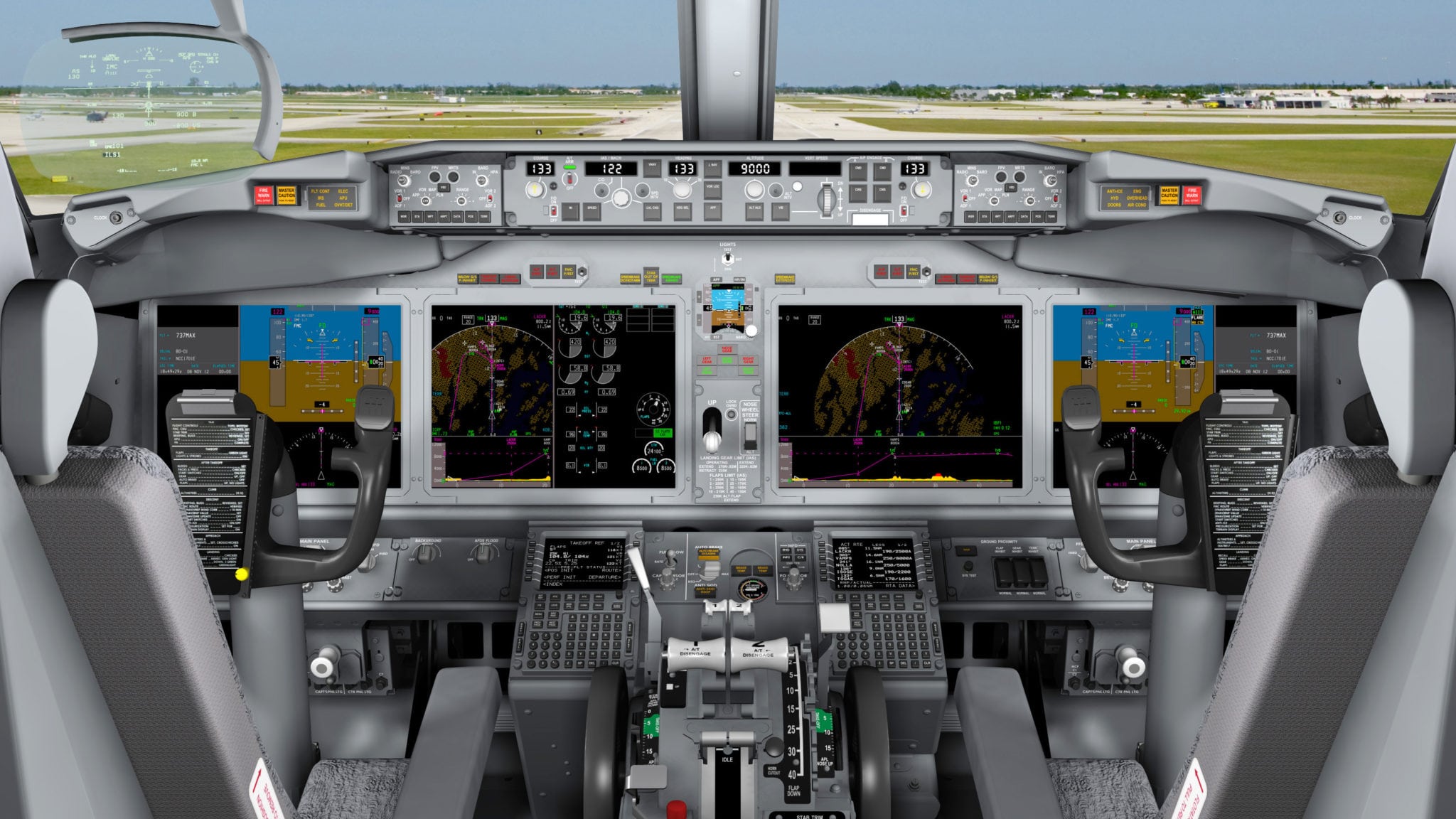[Avionics Magazine 12-29-2016] In 2017, civil aviation regulators and agencies from around the world have established several avionics equipage mandates for airspace users. Over the last year, several civil aviation authorities have made changes to equipage requirements and timelines. Here are the latest dates, equipage requirements and changes you’ll need to be aware of.

Boeing 737 MAX cockpit. Photo: Boeing.
Russia’s GLONASS Mandate: Jan, 1, 2017
The Russian Federation is requiring Russian and non-Russian-built aircraft to have Globalnaya Navigazionnaya Sputnikovaya Sistema (GLONASS) satellite navigation equipment installed by Jan. 1, 2017. This mandate was originally established by Russia in 2012, and is applicable to aircraft weighing above 12,500 pounds registered on an operational certificate issued by Russia’s civil aviation authority, the Federal Air Transport Agency (FATA). According to a working paper issued by the International Civil Aviation Organization in September 2016, assessments of the operational performance of GLONASS conducted between January 2012 and April 2016 confirmed the system meets the precision and reliability requirements of ICAO’s Global Navigation Satellite System (GNSS) Standards and Recommended Practices (SARPs).
China’s Taipei ADS-B Mandate: Changed From Dec. 31, 2016 to Dec. 31, 2019
An aeronautical information supplement issued by China’s air traffic services division in September 2016 confirmed the nation’s decision to delay its mandate for aircraft flying in the Taipei Flight Information Region (FIR) to be equipped with Automatic Dependent Surveillance Broadcast Out (ADS-B Out) avionics from Jan. 1, 2017 to Jan. 1, 2020. This mandate is applicable only to aircraft flying at or above Flight Level 290 (FL290) within the Taipei FIR. In issuing the delay, China’s Civil Aeronautics Administration expressed concern with the rate of the ADS-B Out equipage level of aircraft flying in the Taipei FIR. China’s ADS-B Out mandate requires equipment that meets configuration standards of either the European Aviation Safety Agency (EASA) Acceptable Means of Compliance (AMC) 20-24 or Appendix XI of Civil Aviation Order 20.18 of the Civil Aviation Safety Authority of Australia (CASA).
Australia’s ADS-B Mandate: Feb. 2, 2017
Australian civil aviation regulator CASA is requiring all aircraft operating under Instrument Flight Rules in Australian airspace to be equipped with ADS-B Out by Feb. 2, 2017. Airservices Australia has been introducing ADS-B surveillance into the nation’s airspace since 2007. More than 1,800 Australian registered IFR aircraft have already been equipped with the technology, as well as another 350 non-IFR aircraft. Aircraft operating under Visual Flight Rules (VFR) are not required to be equipped with ADS-B in Australia. In November, CASA extended the Feb. 2, 2017 equipage deadline for aircraft weighing less than 12,500 pounds to Jan. 1, 2020. This is only applicable to aircraft weighing less than 12,500 pounds.
United States Part 135 Radio Altimeters Mandate: April 24, 2017
Beginning April 24, 2017, Part 135 category rotorcraft are required by the FAA to be equipped with an “operable FAA-approved radio altimeter, or an FAA-approved device that incorporates a radio altimeter, unless otherwise authorized in the certificate holder’s approved minimum equipment list,” according to the agency’s rules for Part 135 operations.
North Atlantic Track System Data Link Mandate: Dec. 7, 2017
Operators flying the optimum North Atlantic Tracks routes should be aware of phase 2 of the North Atlantic Data Link Mandate (NAT DLM), which was adopted by the North Atlantic Systems Planning Group as occurring in 3 steps: Phase 2A, 2B and 2C. Currently, all aircraft operating on or at any point along two specified tracks within the NAT Organized Track System (OTS) between Flight Level 360 FL360 to FL390 (inclusive) during the OTS validity period are required to be fitted with and using Future Air Navigation System (FANS) 1/A (or equivalent) Controller to Pilot Data Link Communications (CPDLC) and Automatic Dependent Surveillance – Contract (ADS-C) equipment. By Dec. 7, 2017, this requirement is expanded to apply to these altitudes across the entire ICAO NAT region.